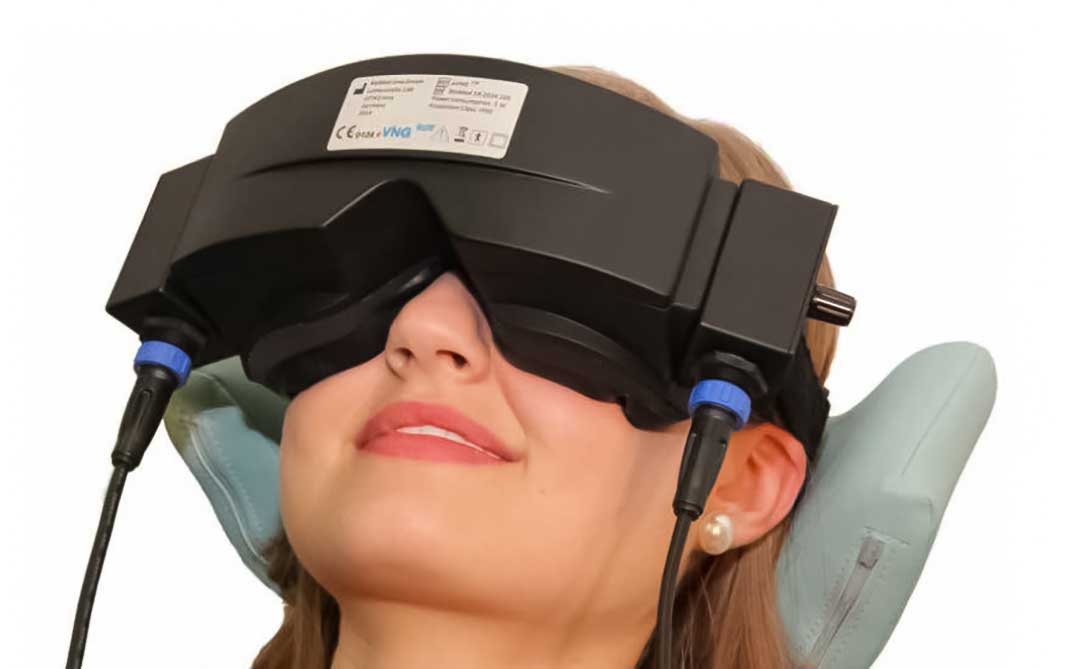
Videonystagmography (VNG)/Head Impulse Test (HIT) Combi
Videonystagmography (VNG) is a vital diagnostic tool for identifying balance disorders by tracking eye movements. The sensorimotor system, particularly the vestibulo-ocular reflex (VOR), plays a central role in maintaining balance. Disruptions to this system can lead to dizziness and balance issues.
Utilizing computer technology, VNG simplifies complex nystagmography analyses. Connected via a USB 2.0 interface to a PC or Notebook, it employs a precise algorithm to identify and analyze pupil movements, even accommodating eyes with makeup. The software, integrated with a patient database, autonomously analyzes test data and presents it alongside video images.
Initially offering tests for spontaneous and positional nystagmus, as well as calorifics, the program can be expanded to include additional assessments such as saccadic, optokinetic, and swivel chair tests.
The HIT (Head Impulse Test) is another valuable tool for vestibular diagnosis, providing a comprehensive solution with intuitive functionality. Developed by Curthoys and Halmagyi in 1988, it has become a standard diagnostic test. By stimulating the semicircular canals, it accurately assesses vestibular function, reducing patient stress. Results are displayed in real-time, with the normal response exhibiting smooth eye movement opposite to head movement. Gain ratios are calculated for each trial, aiding in identifying canal issues.
Technical Specifications
VNG:
- PC requirement: PC or laptop with Intel Core processor i5, RAM: 4 GB, graphics card: 2 GB RAM, USB 2.0, monitor: 1600×900 pixels (better Full HD), runs underWindows 7.0/ 8.0/ 8.1 /10 (32/64 bit)
- System: IR lighting according to EN 60825-1, IM sensor with 800 Hz
- Video recording: Fully automatic test process
- Camera resolution: 520×360 pixels
- Video mask:
– Stable binocular combination mask
– Sharpness of the image can be adjusted
– Mirror adjustable in three levels
– Soft padding for optimal adaptation to the face - Camera type: binocular, 100 Hz synchronous
- Interface: GDT interface for connection to practice databases
- Evaluation:
– Caloric
– Location/Storage
– SpontaneousOptocinetic
– Manual nystagmus marking possible - Accesories: Video mask and connection cable, foot switch with cable, software for Windows, installation CD, operating instructions
HIT:
- PC requirement: PC or laptop with Intel Core i5 processor (from 2nd generation) from 2.2 GHz and at least 2 free USB 2.0 ports (according to EN 60601-1), 2 GBRAM, graphics card 1 GB, Windows 7, 8 or 10 (the PC monitor must have an image resolution of at least 1920×1080 pixels)
- System: Infrared LED wave range 700-1050 nm
- Video recording: 100 frames/sec., 8-bit grayscale including slow motion function
- Resolution: 520×360 pixels
- Video format: AVI format
- Camera type: 100Hz
- Steering: via foot switch
- Evaluation:
– Graphical recording of the impulses per level
– 3D analysis
– Table of measuring points with pulse speed and gain
– Canalogram according to Walther - Accessories: Video mask with gyroscopes and connection cable, foot switch with cable, HIT software for Windows, installation CD, operating instructions
